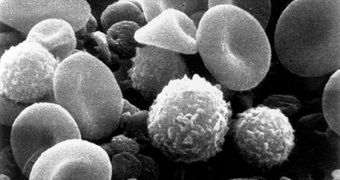A group of experts at Children's Hospital Boston announces the discovery of a genetic regulator that plays a tremendous role in helping immune system cells respond to virtually any kind of emergency.
While flowing through the bloodstream, immune cells need to be prepared to take on any type of invaders that could make their way into our bodies. However, there is no way for these cells to know what they will be up against next.
As such, they carry out their patrols in a state of constant alertness. Once a perpetrator is discovered, the limited number of genes that are involved in producing distinct antibodies and pathogen-recognizing receptors need to be alerted and put into action.
What the CHB team did was discover the regulator that is in charge of carrying out this critical action. The mechanism controls the reshuffling of genes that ensures the optimized production of billions of cells capable of fighting off a particular virus, bacteria or microbe.
In order to verify their discovery, the investigators used genetic manipulation to change that regulatory region. When this did this, the immune cells started producing assorted antibody parts, but without any coherent plan of fighting one invader in particular.
This new discovery leads to a more thorough understanding of how antibodies are made, but also provides additional insight into the coordination mechanisms controlling genetic regulation. Details of the study appear in the September 11 issue of the top scientific journal Nature.
After decades of work in his lab, CHB professor and Howard Hughes Medical Institute (HHMI) investigator Frederick W. Alt says that this discovery is the culmination of all his efforts. “This site impacts every regulatory process that we’ve been studying for 30 years,” he says.
“There are likely other factors binding this region that play a role in this process as well,” says Alt. “We don’t think we’ve finished figuring out how this works,” the investigator explains. He adds, however, that the new results are remarkable in themselves.
It is conceivable that the work will provide investigators studying immunology with new avenues of research, especially for creating novel methods of addressing auto-immune disorders, chronic illnesses such as AIDS, and maybe even develop a cure for the flu.
Now that scientists know what to look for, deciphering the exact method this control mechanism uses is only a matter of time, experts from medicalXpress report.
“The immunoglobulin gene locus has always served as a pioneering place to look at gene regulation because it’s so complex and uses all these examples of regulation,” Alt explains.
“Enhancers were discovered there, as well as recombination mechanisms, and repair pathways. And now the immunoglobulin genes are providing us with a system to define how gene expression can be regulated over long distances,” he concludes.

 14 DAY TRIAL //
14 DAY TRIAL //